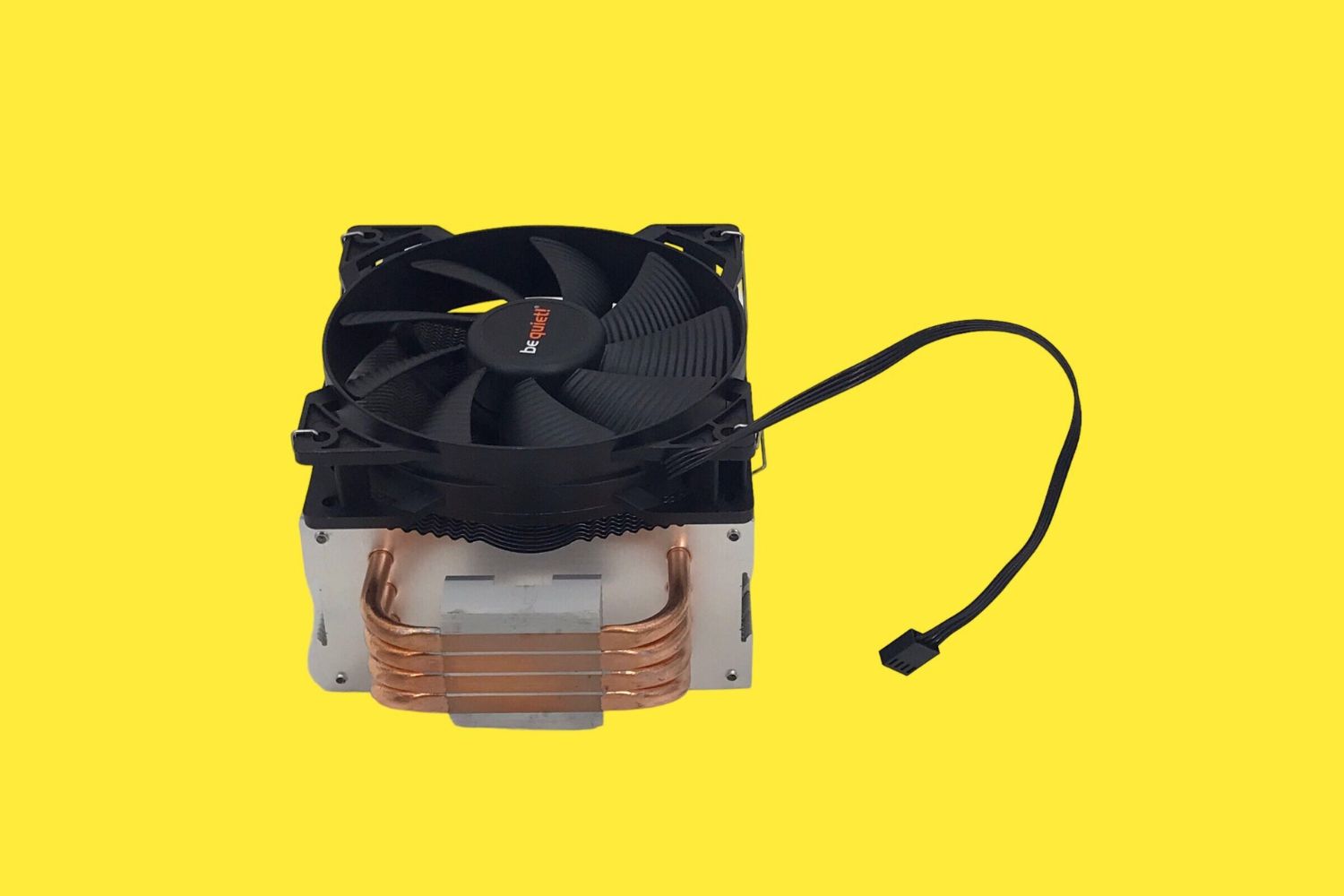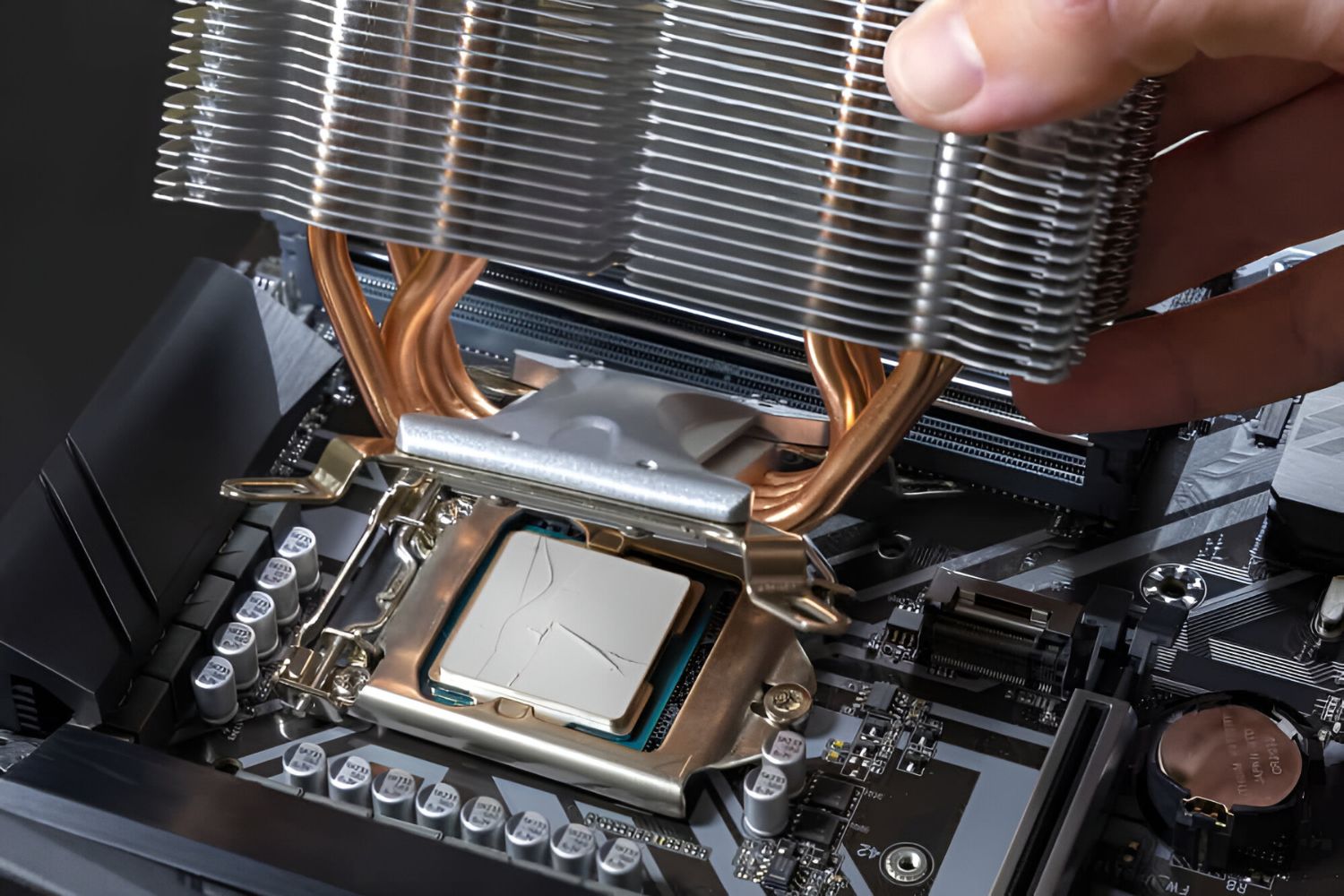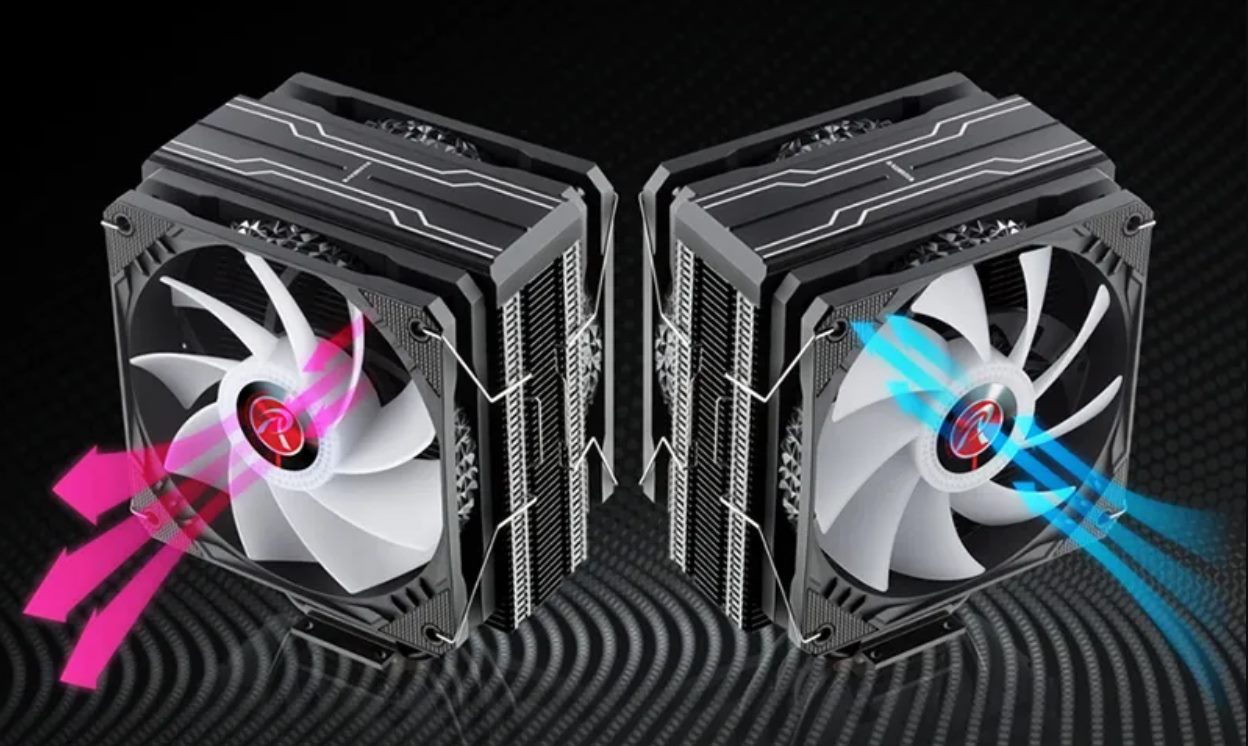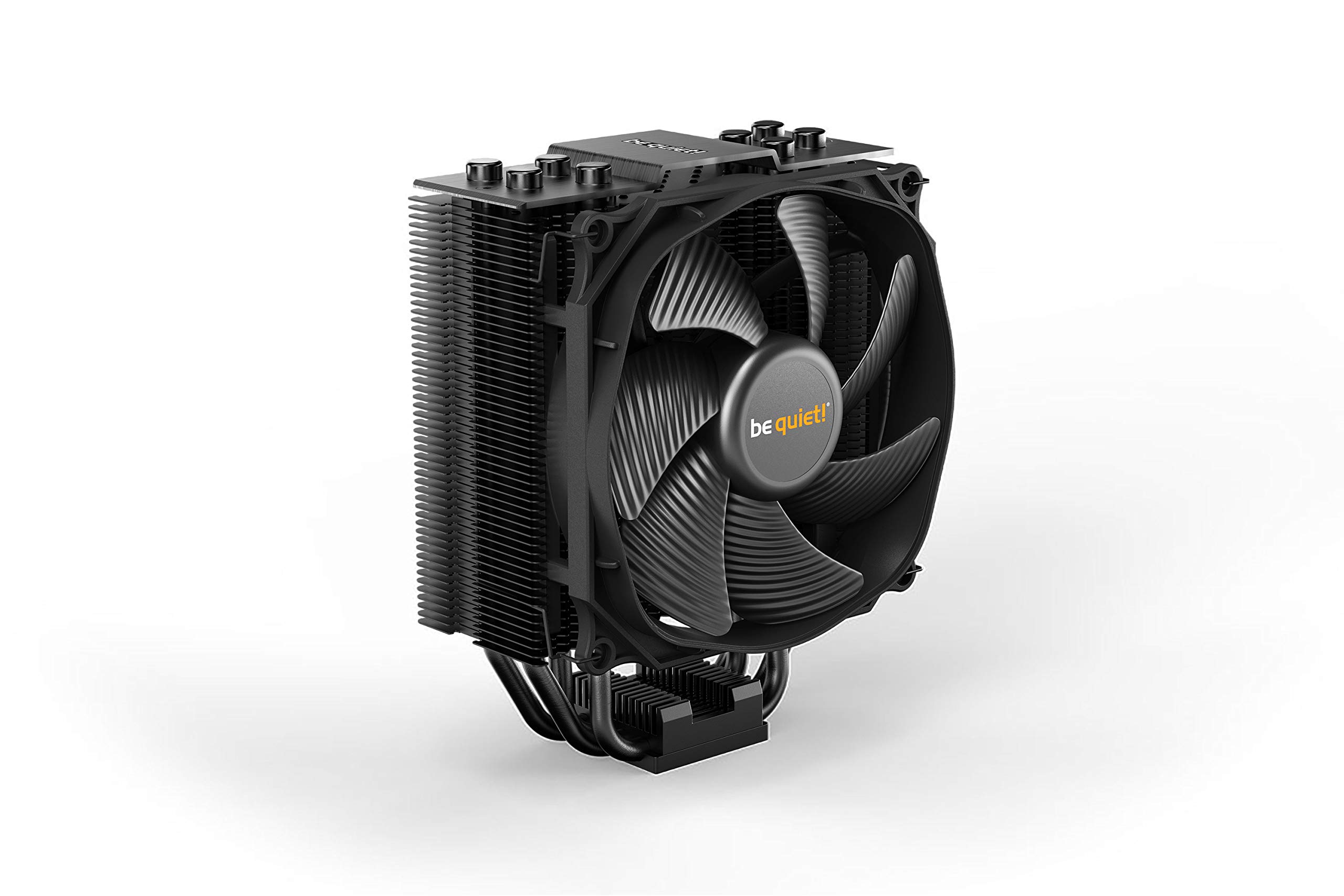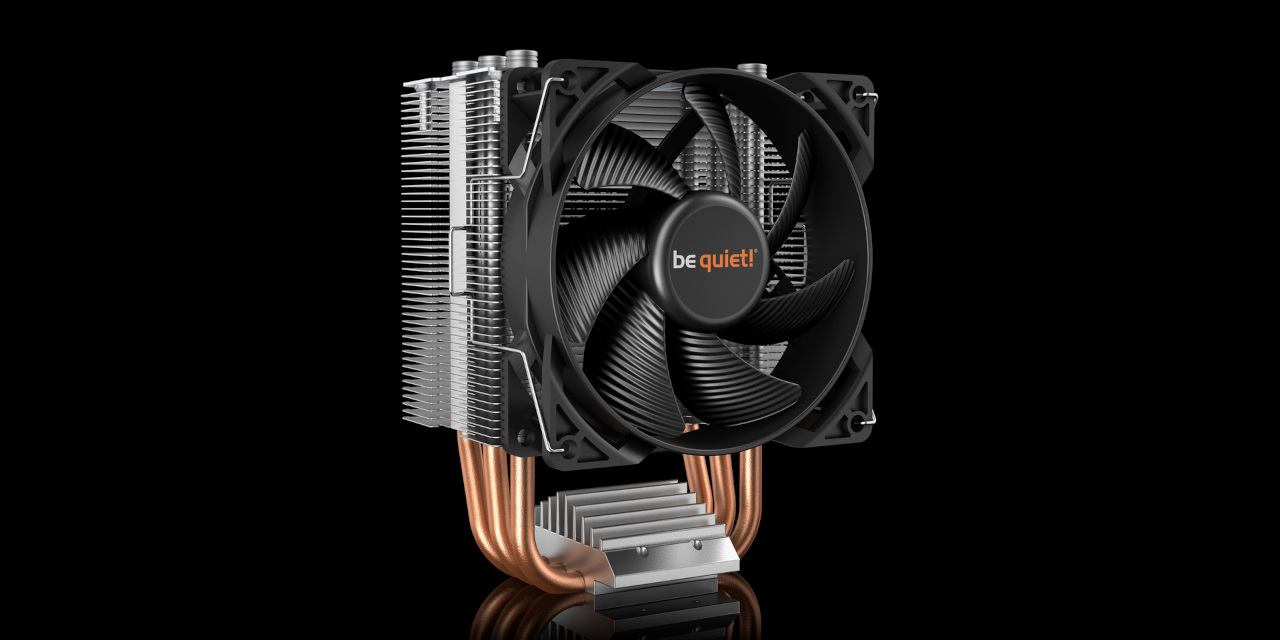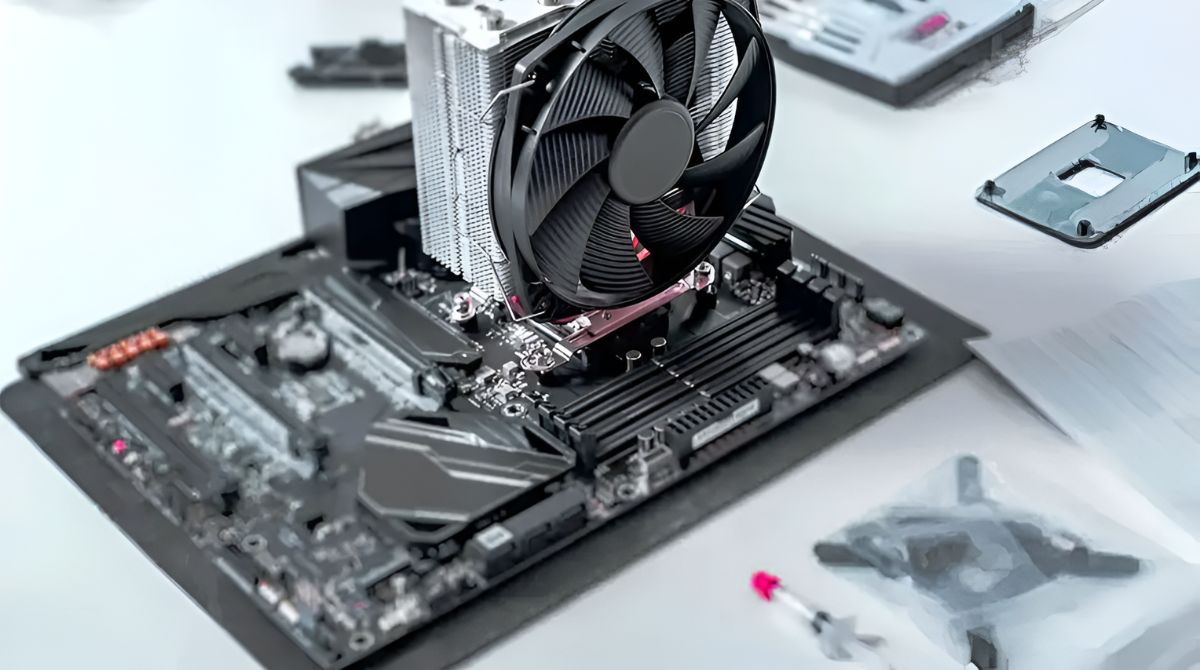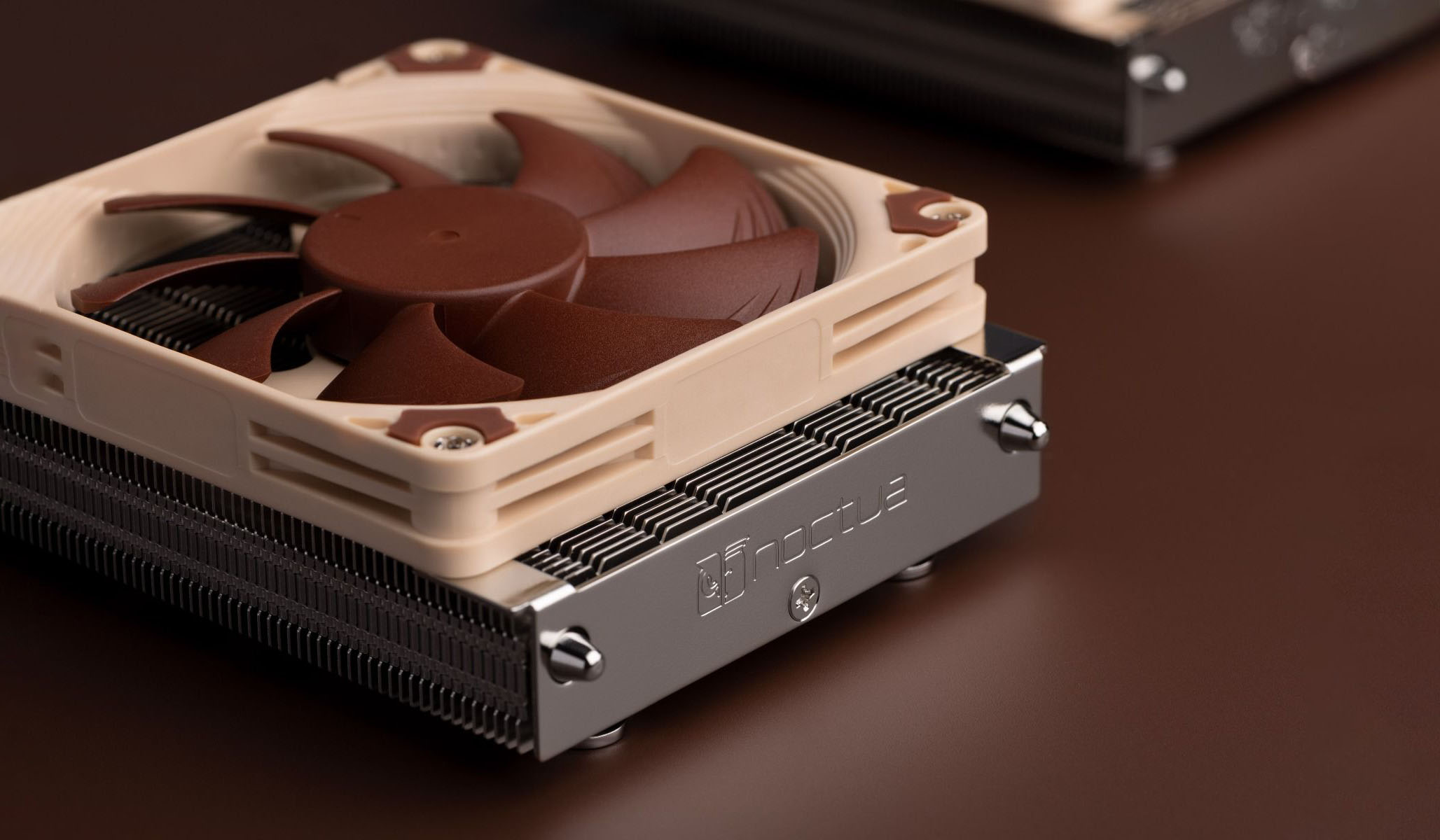Introduction
When it comes to keeping your computer running smoothly, one of the key components to consider is the CPU cooler. A CPU cooler is responsible for dissipating heat generated by the central processing unit (CPU) and preventing it from overheating. Selecting the right CPU cooler is vital to maintaining optimal performance and prolonging the lifespan of your computer.
One important factor to consider when choosing a CPU cooler is its Thermal Design Power (TDP). TDP refers to the maximum amount of heat that a CPU cooler can effectively dissipate. It is crucial to ensure that the CPU cooler can handle the thermal load produced by your CPU to maintain stable and efficient operation.
In this article, we will explore the concept of TDP and its significance in choosing a CPU cooler. We will also discuss various methods to determine the TDP of a CPU cooler and where to find reliable information about TDP.
Understanding TDP and its impact on CPU cooling will empower you to make informed decisions when selecting a CPU cooler, ensuring optimal performance and longevity for your computer.
What is TDP?
Thermal Design Power (TDP) is a specification provided by CPU manufacturers to indicate the maximum amount of heat that a CPU is designed to generate. It is measured in watts (W) and serves as a guideline for selecting a suitable CPU cooler.
TDP represents the maximum amount of heat that the CPU cooler must be capable of dissipating to prevent the CPU from overheating. A CPU with a higher TDP rating indicates that it generates more heat and requires a more robust cooling solution.
It is important to note that TDP should not be confused with actual power consumption. TDP is merely a measure of heat output, and it is possible for the CPU to consume less power than specified by its TDP rating.
Manufacturers calculate TDP based on the worst-case scenario of the CPU operating at maximum load for an extended period. This allows for a certain level of headroom to handle peak power consumption and variations in workload.
Having a CPU cooler that can effectively handle the TDP of your CPU is crucial for maintaining stable operating temperatures. If the CPU cooler is not capable of dissipating the heat generated, the CPU may throttle its performance to avoid overheating, leading to reduced performance or even system instability.
Therefore, understanding the TDP of your CPU and selecting a CPU cooler with an appropriate TDP rating is essential for ensuring optimal cooling and consistent performance.
The Importance of TDP in CPU Coolers
When it comes to the proper functioning of your computer, maintaining optimal temperatures for your CPU is crucial. The TDP rating plays a significant role in ensuring that the CPU cooler can effectively dissipate the heat generated by the CPU.
The TDP rating of a CPU cooler is a key factor in determining its cooling capacity. If the CPU cooler has a lower TDP rating than the CPU it is intended to cool, it may struggle to handle the heat load, resulting in higher operating temperatures. This can lead to thermal throttling, where the CPU reduces its clock speed to prevent overheating, thus impacting performance.
On the other hand, if the CPU cooler has a much higher TDP rating than the CPU, it may be overkill and unnecessary. This can lead to wasteful spending on a more expensive and larger cooler than is required.
Choosing a CPU cooler with an appropriate TDP rating is essential for maintaining optimal operating temperatures and ensuring the longevity of your CPU. When a CPU operates at higher temperatures for extended periods, it can cause degradation of the internal components, reducing the overall lifespan of the CPU.
Additionally, a CPU cooler with a suitable TDP rating can help mitigate the noise generated by the cooling system. When a cooler is under stress and struggling to handle the heat load, the fans may need to work harder and produce more noise to keep the CPU cool. By selecting a cooler with sufficient TDP capacity, you can maintain a quieter computing experience.
Overall, understanding the TDP rating and its importance in CPU coolers enables you to make an informed decision when selecting a cooler that can handle the heat generated by your CPU, thus ensuring optimal performance, longevity, and a quieter computing experience.
How to Find the TDP of Your CPU
Knowing the TDP of your CPU is essential for selecting an appropriate CPU cooler. Fortunately, finding the TDP of your CPU is relatively straightforward. Here are a few methods you can use to determine the TDP of your CPU:
- Check the manufacturer’s website or documentation: The most reliable source for TDP information is the official website or documentation provided by the CPU manufacturer. Look for the product specifications section, where you can find detailed information about the TDP rating of your CPU.
- Use CPU identification software: There are various CPU identification software available that can provide detailed information about your CPU, including its TDP rating. Programs like CPU-Z, HWINFO, or Speccy can detect and display the TDP information of your CPU.
- Refer to the motherboard manual: Sometimes, the TDP information of your CPU can be found in the motherboard manual. Check the specifications section or any tables that provide compatibility information for the supported CPUs.
By using one or a combination of these methods, you can easily find the TDP rating of your CPU. Ensure that you have the correct model and generation information for accurate results.
It is worth noting that the TDP rating may vary depending on the specific model and variant of the CPU. Therefore, double-checking the TDP information from multiple reliable sources can help validate the accuracy of the TDP rating.
Once you have determined the TDP of your CPU, you can proceed to select a CPU cooler that is capable of handling the thermal load effectively. Keep in mind that it is generally recommended to choose a CPU cooler with a TDP rating higher than the TDP of your CPU to ensure sufficient cooling capacity.
By understanding and verifying the TDP of your CPU, you can make an informed decision when selecting a CPU cooler that meets the thermal requirements of your CPU, promoting optimal performance and longevity.
Understanding the TDP of CPU Coolers
When selecting a CPU cooler, it is essential to understand the TDP (Thermal Design Power) rating and how it relates to the cooling capacity of the cooler. The TDP of a CPU cooler refers to its ability to dissipate heat generated by the CPU effectively. Understanding the TDP of a CPU cooler will help you choose the right cooling solution for your needs.
The TDP rating of a CPU cooler provides an indication of the maximum amount of heat that it can dissipate. CPU coolers with higher TDP ratings have greater cooling capacity, meaning they can handle more heat. On the other hand, CPU coolers with lower TDP ratings are designed for CPUs that generate less heat.
The TDP rating of a CPU cooler should match or exceed the TDP of the CPU it is intended to cool. If the TDP of the CPU exceeds the TDP rating of the cooler, it can lead to higher temperatures, reduced performance, and potential overheating issues. On the other hand, if the TDP of the cooler greatly exceeds the TDP of the CPU, it may be unnecessary and result in additional cost and larger physical dimensions.
It is important to note that TDP is not the sole factor to consider when selecting a CPU cooler. Other aspects such as noise levels, physical dimensions, and compatibility with your computer case should also be taken into account.
When comparing CPU coolers and their TDP ratings, it is essential to consider the cooling methods employed. There are various types of CPU coolers, including air coolers and liquid coolers, each with different cooling capacities and characteristics.
Air coolers use fans and heat sinks to dissipate heat, while liquid coolers rely on a combination of a radiator, pump, and water block to transfer and dissipate heat. Liquid coolers generally have higher TDP ratings and can provide more efficient cooling than air coolers. However, they can be more expensive and require additional maintenance.
Understanding the TDP of CPU coolers allows you to choose a cooling solution that is capable of effectively dissipating the heat produced by the CPU. By selecting a cooler with an appropriate TDP rating and cooling method, you can ensure the longevity of your CPU, maintain optimal operating temperatures, and potentially reduce noise levels within your system.
Methods to Determine the TDP of a CPU Cooler
When selecting a CPU cooler, it is crucial to ensure that its TDP (Thermal Design Power) rating is sufficient to handle the thermal load of your CPU. Here are several methods you can use to determine the TDP of a CPU cooler:
- Check product specifications: The TDP rating is often listed in the product specifications of CPU coolers. It can be found on the packaging, product webpage, or user manual. Look for the TDP value that indicates the cooler’s cooling capacity.
- Visit manufacturer websites: CPU cooler manufacturers often provide detailed information about their products on their websites. Check the product page or support section for the TDP rating of the cooler you are interested in. This is a reliable source of information as it comes directly from the manufacturer.
- Consult online retailer listings: Many online retailers include product specifications when listing CPU coolers. Look for the TDP rating in the specifications section of the product listing. While these listings may not always be as detailed as the manufacturer’s website, they can still provide valuable information.
- Read customer reviews and forums: Online forums and customer reviews can be a useful resource for finding information about the TDP of a CPU cooler. Look for reviews or discussions that mention the TDP compatibility of the cooler with specific CPUs. However, keep in mind that information from these sources should be cross-referenced with official product information.
- Consult with computer hardware experts: If you are unsure about the TDP compatibility of a CPU cooler, it is advisable to seek advice from computer hardware experts or professionals. They can provide insights and recommendations based on their experience and knowledge of CPU cooler compatibility.
It is important to note that TDP ratings for CPU coolers are not an absolute measure, but rather an indication of their heat dissipation capacity. Different CPU cooler models may perform differently despite having the same TDP rating. Factors such as the cooling method, fan size, heat sink design, and overall build quality can affect the actual cooling performance.
By utilizing these methods to determine the TDP of a CPU cooler, you can ensure that the cooler you choose has the necessary cooling capacity to effectively dissipate the heat generated by your CPU for optimal performance and longevity.
Checking Product Specifications for TDP Information
When it comes to determining the TDP (Thermal Design Power) of a CPU cooler, one of the most reliable sources of information is the product specifications. Manufacturers usually provide TDP ratings for their CPU coolers, allowing you to assess if a specific cooler is suitable for your CPU. Here’s how you can check the product specifications for TDP information:
1. Packaging and Labels: When you purchase a CPU cooler, the packaging often includes key details about the cooler’s specifications. Look for labels or stickers that indicate the TDP rating. It is usually displayed prominently on the packaging to help consumers make informed decisions.
2. Product Webpage: Visit the manufacturer’s website and search for the product page of the CPU cooler you are interested in. The product page should provide detailed specifications, including the TDP rating. Look for a specific section dedicated to TDP or thermal characteristics to find the desired information.
3. User Manual: If you have already obtained the CPU cooler, the user manual can be another valuable resource to check for TDP information. Look for a dedicated section that provides technical specifications or cooling details. The TDP rating should be clearly mentioned in this section.
4. Online Retailer Listings: If you are researching different CPU coolers, online retailer listings can also provide TDP information. Check the product description or specifications listed by the retailer. However, keep in mind that these listings may not always provide the same level of detail as the manufacturer’s website.
5. Official Product Documentation: Some manufacturers provide additional documentation that can be downloaded from their website. These documents may include more comprehensive technical information about the CPU cooler, including the TDP rating. Look for product datasheets or technical guides that cover the specific model of the cooler you are interested in.
When checking the product specifications for TDP information, ensure that you are looking at the correct model and variant of the CPU cooler. Different cooler models may have different TDP ratings, even within the same product line.
If you are unable to find the TDP information in the product specifications or have any doubts, it is recommended to contact the manufacturer directly for clarification. They can provide accurate and up-to-date information regarding the TDP rating of their CPU coolers.
By checking the product specifications for TDP information, you can have a clear understanding of a CPU cooler’s cooling capacity and make an informed decision when selecting the right cooler for your CPU.
Using Manufacturer Websites for TDP Details
When it comes to finding detailed and reliable information about the TDP (Thermal Design Power) of CPU coolers, manufacturer websites are one of the best sources to utilize. Manufacturers typically provide comprehensive and up-to-date information that can help you make informed decisions. Here’s how you can use manufacturer websites to find TDP details:
1. Visit the Manufacturer’s Website: Start by navigating to the official website of the CPU cooler manufacturer. Look for a dedicated section or page that provides information about their product lineup. This section might be labeled as “Products,” “Coolers,” or something similar.
2. Locate the CPU Cooler Model: Once you are on the product page or section, find the specific CPU cooler model you are interested in. Manufacturers often display their different cooler models in a visually organized manner, making it easy to locate the one you are researching.
3. Explore the Specifications: Click on the CPU cooler model to access its dedicated product page. Here, you will typically find detailed specifications about the cooler, including its TDP rating. Look for a specific section or tab labeled “Specifications,” “Technical Details,” or similar terms.
4. Find the TDP Rating: Within the specifications section, search for the TDP information. The TDP rating should be clearly mentioned and displayed alongside other relevant details like dimensions, weight, and fan speed. Manufacturers may also provide additional notes or explanations regarding the TDP rating to help you understand its significance.
5. Cross-Reference Information: It is always a good idea to cross-reference the TDP details with multiple sources, including the official manufacturer’s website. This can help ensure the accuracy and consistency of the information you obtain. In case you have any questions or doubts, you can reach out to the manufacturer’s customer support for further clarification.
Using manufacturer websites as a resource for TDP details offers several advantages. Firstly, the information is provided directly by the manufacturer, ensuring reliability and accuracy. Secondly, you can often find additional information about the specific cooler model, such as compatibility, recommended usage scenarios, and any special features.
By using manufacturer websites to access detailed TDP information, you can make well-informed decisions when selecting a CPU cooler that matches your cooling requirements, ensuring optimal performance and longevity for your CPU.
Utilizing Online Forums and Communities for TDP Insights
When seeking insights and real-world experiences regarding the TDP (Thermal Design Power) of CPU coolers, online forums and communities can be valuable resources. These platforms provide an opportunity to connect with knowledgeable individuals who can offer insights and recommendations. Here’s how you can utilize online forums and communities for TDP insights:
1. Join Relevant Forums: Identify popular forums or communities that discuss computer hardware, cooling solutions, or specific CPU cooler brands. Register an account and familiarize yourself with the forum rules and guidelines to ensure a positive and collaborative experience.
2. Search for Existing Discussions: Use the forum’s search functionality to look for discussions related to TDP, CPU coolers, or compatibility questions. Often, others have already asked similar questions or shared their experiences, making it easier to find relevant information.
3. Read Multiple Opinions: Take the time to read through multiple responses, as opinions can vary. Pay attention to users who provide detailed explanations, share benchmarks, or have a reputation for expertise in cooling solutions. This can provide you with a more well-rounded understanding of TDP considerations.
4. Engage in Discussions: If you have specific questions or need clarification, don’t hesitate to ask. Engaging in discussions allows you to interact directly with experienced users who can offer insights tailored to your situation. Be clear about your CPU model and specifications to receive relevant responses.
5. Consider Multiple Viewpoints: Keep in mind that experiences shared on forums may not always align with official specifications or recommendations. While forums are a valuable resource, they should be considered as supplementary information alongside official sources. Always cross-reference information and use your judgment to make informed decisions.
6. Take Note of Consensus: Look for recurring themes or responses that align with established best practices. Consensus among experienced users can provide a reliable benchmark for understanding TDP considerations and selecting compatible CPU coolers.
Utilizing online forums and communities grants you access to a wealth of collective knowledge and experiences. Engaging with knowledgeable individuals can provide practical insights, real-world performance observations, and helpful tips for choosing a CPU cooler based on TDP requirements.
However, it is important to exercise critical thinking and consider the credibility of the information shared. While forums can offer valuable insights, remember to cross-reference with official manufacturer specifications and recommendations to ensure accuracy.
By harnessing the power of online forums and communities, you can tap into the expertise of like-minded individuals and gain TDP insights that can inform your decisions when selecting a CPU cooler.
Seeking Professional Advice for Accurate TDP Assessment
When it comes to accurately assessing the TDP (Thermal Design Power) requirements of your CPU and selecting an appropriate CPU cooler, seeking professional advice can be immensely beneficial. Consulting with professionals who specialize in computer hardware and cooling solutions can provide you with expert guidance and ensure accurate TDP assessment. Here’s why seeking professional advice is important:
1. In-depth Knowledge and Experience: Professionals in the field of computer hardware possess extensive knowledge and hands-on experience with a wide range of CPUs and CPU coolers. They stay updated with the latest industry trends and have a deep understanding of the thermal characteristics of different components.
2. Compatibility Assessment: Professionals can help you determine the compatibility between your CPU and various CPU coolers. They consider not only the TDP rating but also other factors such as physical dimensions, socket compatibility, and power requirements. Their expertise ensures that you make an informed decision based on accurate assessments.
3. Optimal Cooling Solutions: Professional advice allows you to explore a wider range of cooling solutions that cater specifically to your needs. They can suggest alternative options that may better suit your system’s requirements, taking into account factors such as noise levels, budget constraints, and specific use cases.
4. Fine-tuning and Optimization: Professionals can help optimize your cooling setup by recommending additional components or modifications to improve thermal performance. They may suggest airflow adjustments, additional fans, or different cooling methods based on their understanding of system dynamics and thermal management principles.
5. Future-proofing: By consulting with professionals, you can make informed decisions that take into consideration not just your current CPU but also future upgrades. They can provide insights into the potential cooling requirements of future CPU upgrades, allowing you to choose a CPU cooler that offers sufficient headroom for future system upgrades.
It is recommended to seek professional advice from reputable sources such as computer technicians, hardware stores with knowledgeable staff, or specialized cooling solution providers. Make sure to provide them with accurate information about your CPU model, intended usage, and any specific requirements you may have.
While seeking professional advice does come at a cost, the expertise and accuracy they provide can save you from potential compatibility issues, inadequate cooling performance, or the need for future upgrades. Their guidance ensures that you select the most appropriate CPU cooler for your specific needs, leading to optimal system performance and longevity.
Keep in mind that while seeking professional advice is valuable, it is still essential to cross-reference their recommendations with official specifications and conduct independent research to make well-informed decisions.
By seeking professional advice, you can gain accurate TDP assessments and benefit from the expertise and experience of professionals who specialize in computer hardware and cooling solutions.
Conclusion
Understanding the importance of TDP (Thermal Design Power) in CPU coolers is crucial for maintaining optimal system performance and longevity. By selecting a CPU cooler with a suitable TDP rating, you can ensure efficient heat dissipation and prevent the CPU from experiencing overheating issues.
Throughout this article, we explored various methods to determine the TDP of both CPUs and CPU coolers. Checking product specifications, utilizing manufacturer websites, and seeking professional advice are reliable approaches to obtain accurate TDP information.
Online forums and communities can also provide valuable insights and real-world experiences, but it is important to cross-reference the information gathered and consider multiple viewpoints to ensure accuracy.
When selecting a CPU cooler, it is essential to consider compatibility, cooling methods, physical dimensions, and noise levels in addition to TDP. Taking a comprehensive approach ensures that you choose a CPU cooler that meets your system’s specific needs.
By using the various methods discussed in this article, you can make informed decisions when selecting a CPU cooler that effectively handles the thermal load generated by your CPU. This will promote optimal performance, extend the lifespan of your components, and provide a quieter and more enjoyable computing experience.
Remember to regularly monitor and maintain your CPU cooler to ensure its effectiveness over time. Clean the cooler and fans to prevent dust buildup, and consider reapplying thermal paste when necessary to optimize heat transfer between the CPU and cooler.
Overall, understanding and considering the TDP of both your CPU and CPU cooler is a crucial aspect of computer system maintenance. By choosing the right CPU cooler and ensuring proper cooling, you can create an efficient and reliable system that performs optimally for your specific computing needs.







